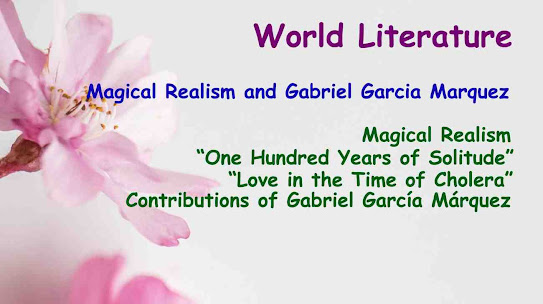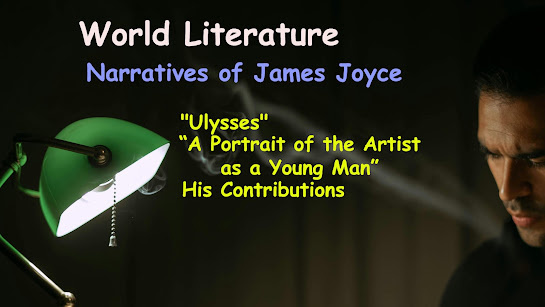In the history of the World Literature, Nobel Prize is the most Prestigious Prize of the World in Lterature. The Nobel Prize in Literature, awarded annually by the Swedish Academy, celebrates authors' outstanding literary contributions.
Established in 1895 by Alfred Nobel's will, it stands as one of five esteemed Nobel Prizes, recognizing excellence in chemistry, physics, literature, peace, and physiology or medicine.
Administered by the Nobel Foundation, the prize's first recipient was Sully Prudhomme of France in 1901, receiving a medal, diploma, and varying monetary prize.
Nobel Laureates’ List
1901: Sully Prudhomme (France)
1902: Theodor Mommsen (Germany)
1903:
Bjørnstjerne Bjørnson (Norway)
1904:
Frédéric Mistral (France) and José Echegaray (Spain)
1905:
Henryk Sienkiewicz (Poland)
1906:
Giosuè Carducci (Italy)
1907:
Rudyard Kipling (United Kingdom)
1908:
Rudolf Christoph Eucken (Germany)
1909:
Selma Lagerlöf (Sweden)
1910:
Paul Heyse (Germany)
1911:
Count Maurice Maeterlinck (Belgium)
1912:
Gerhart Hauptmann (Germany)
1913:
Rabindranath Tagore (India)
1915:
Romain Rolland (France)
1916:
Verner von Heidenstam (Sweden)
1917:
Karl Gjellerup (Denmark) and Henrik Pontoppidan (Denmark)
*1918:
Erik Axel Karlfeldt (Sweden) Declined the Prize
1919:
Carl Spitteler (Switzerland)
1920:
Knut Hamsun (Norway)
1921:
Anatole France (France)
1922:
Jacinto Benavente (Spain)
1923:
William Butler Yeats (Ireland)
1924:
Władysław Reymont (Poland)
1925:
George Bernard Shaw (Ireland)
1926:
Grazia Deledda (Italy)
1927:
Henri Bergson (France)
1928:
Sigrid Undset (Norway)
1929:
Thomas Mann (Germany)
1930:
Sinclair Lewis (United States)
1931:
Erik Axel Karlfeldt (Sweden) (posthumous award)
1932:
John Galsworthy (United Kingdom)
1933:
Ivan Bunin (Soviet Union)
1934:
Luigi Pirandello (Italy)
1936:
Eugene O'Neill (United States)
1937:
Roger Martin du Gard (France)
1938:
Pearl S. Buck (United States)
1939:
Frans Eemil Sillanpää (Finland)
1944:
Johannes Vilhelm Jensen (Denmark)
1945:
Gabriela Mistral (Chile)
1946:
Hermann Hesse (Switzerland)
1947:
André Gide (France)
1948:
T.S. Eliot (United Kingdom)
1949:
William Faulkner (United States)
1950:
Bertrand Russell (United Kingdom)
1951:
Pär Lagerkvist (Sweden)
1952:
François Mauriac (France)
1953:
Winston Churchill (United Kingdom)
1954:
Ernest Hemingway (United States)
1955:
Halldór Laxness (Iceland)
1956:
Juan Ramón Jiménez (Spain)
1957:
Albert Camus (France)
1958:
Boris Pasternak (Soviet Union)
1959:
Salvatore Quasimodo (Italy)
1960:
Saint-John Perse (France)
1961:
Ivo Andrić (Yugoslavia)
1962:
John Steinbeck (United States)
1963:
Giorgos Seferis (Greece)
*1964:
Jean-Paul Sartre (France) Declined the Prize
1965:
Mikhail Sholokhov (Soviet Union)
1966:
Shmuel Yosef Agnon (Israel) and Nelly Sachs (Sweden/Germany)
1967:
Miguel Ángel Asturias (Guatemala)
1968:
Yasunari Kawabata (Japan)
1969:
Samuel Beckett (Ireland)
1970:
Aleksandr Solzhenitsyn (Soviet Union)
1971:
Pablo Neruda (Chile)
1972:
Heinrich Böll (West Germany)
1973:
Patrick White (Australia)
1974:
Eyvind Johnson (Sweden) and Harry Martinson (Sweden)
1975:
Eugenio Montale (Italy)
1976:
Saul Bellow (United States)
1977:
Vicente Aleixandre (Spain)
1978:
Isaac Bashevis Singer (United States)
1979:
Odysseas Elytis (Greece)
1980:
Czesław Miłosz (US/Poland)
1981:
Elias Canetti (Bulgeria/United Kingdom)
1982:
Gabriel García Márquez (Colombia)
1983:
William Golding (United Kingdom)
1984:
Jaroslav Seifert (Czechoslovakia)
1985
- Claude Simon (France)
1986
- Wole Soyinka (Nigeria)
1987
- Joseph Brodsky (US/Soviet Union/Russia)
1988
- Naguib Mahfouz (Egypt)
1989
- Camilo José Cela (Spain)
1990
- Octavio Paz (Mexico)
1991
- Nadine Gordimer (South Africa)
1992
- Derek Walcott (Saint Lucia)
1993
- Toni Morrison (United States)
1994
- Kenzaburō Ōe (Japan)
1995
- Seamus Heaney (Ireland)
1996
- Wisława Szymborska (Poland)
1997
- Dario Fo (Italy)
1998
- José Saramago (Portugal)
1999
- Günter Grass (Germany)
2000
- Gao Xingjian (France/China)
2001
- V. S. Naipaul (Trinidad and Tobago/United Kingdom)
2002
- Imre Kertész (Hungary)
2003
- J. M. Coetzee (South Africa/Australia)
2004
- Elfriede Jelinek (Austria)
2005
- Harold Pinter (United Kingdom)
2006
- Orhan Pamuk (Turkey)
2007
- Doris Lessing (United Kingdom/Zimbabwe)
2008
- J. M. G. Le Clézio (France/Mauritius)
2009
- Herta Müller (Germany/Romania)
2010
- Mario Vargas Llosa (Peru/Spain)
2011
- Tomas Tranströmer (Sweden)
2012
- Mo Yan (China)
2013
- Alice Munro (Canada)
2014
- Patrick Modiano (France)
2015
- Svetlana Alexievich (Belarus)
2016
- Bob Dylan (United States)
2017
- Kazuo Ishiguro (United Kingdom/Japan)
2018
- Olga Tokarczuk (Poland)
2019
- Peter Handke (Austria)
2020
- Louise Glück (United States)
2021
– Abdulrazak Gurnah (Tanzania)
2022
– Annie Ernaux (France)
2023 – Jon Fosse (Norway)
Nobel Laureates at a Glance
As of 2023, 120 individuals have been honored, spanning a diverse range of ages and backgrounds. The youngest laureate, Rudyard Kipling, received the award at 41 in 1907, while the oldest, Doris Lessing, was 88 when honored in 2007. Notably, Erik Axel Karlfeldt was posthumously recognized in 1931.
Despite its prestige, some laureates have declined the prize, notably Boris Pasternak in 1958 and Jean-Paul Sartre in 1964. Nevertheless, they remain on the Nobel committee's list of laureates.
Seventeen women have been awarded the Nobel Prize in Literature, and it has been shared by two recipients on four occasions. Additionally, there have been seven years when the prize was not awarded, and in some instances, announcements were delayed by one year.
As of 2022, English-speaking authors lead with 29 laureates, followed by French with 16 and German with 14, with France boasting the highest number of Nobel laureates in literature.
Conclusion
The
distribution of Nobel laureates in literature is uneven, with certain countries
like France, Germany, and the United Kingdom producing more winners than
others. Factors contributing to this include historical prominence in
literature, linguistic influence, and cultural impact. Efforts continue to
promote diversity and inclusivity in recognizing outstanding literary
achievements worldwide.









